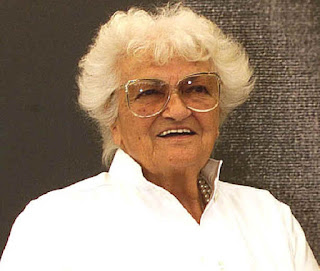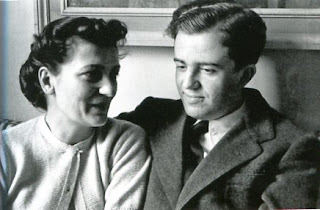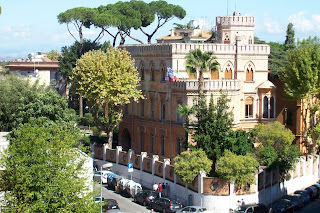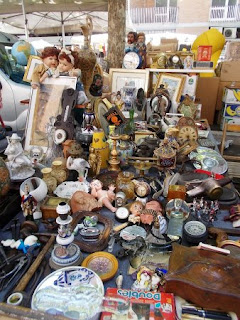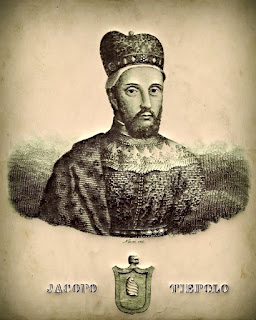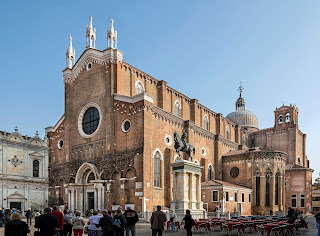Veteran writer who cast a critical eye on Italian politics and society
 |
| Indro Montanelli, in the offices of Corriere della Sera, working from an improvised chair made from a pile of books |
The previous year he had been named as one of 50 World Press
Freedom Heroes by the International Press Institute.
Montanelli had been a witness to many of the major events of
the 20th century. He was in Danzig when Hitler rejected the ultimatum from
Britain and France in September 1939. He was in the streets of Budapest in 1956
when Soviet tanks rolled in and he was shot in the legs by Red Brigades
terrorists on an Italian street in 1977.
Montanelli was born Indro Alessandro Raffaello Scizogene
Montanelli in 1909 at Fucecchio near Florence.
He studied for a law degree at the University of Florence in
the early 1920s and began his journalistic career by writing for the Fascist
newspaper, Il Selvaggio.
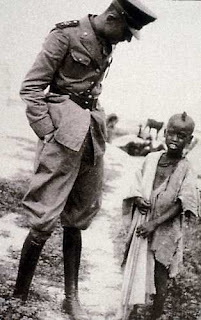 |
| Montanelli in Ethiopia in 1936 |
It was a book that honestly conveyed what Montanelli had
seen, some of which caused him to change his mind about Benito Mussolini, the Fascist leader. It was a
little too honest for the Fascist oligarchy, however, and, after his similarly objective
reporting on the Spanish civil war did not meet with Fascist approval, his
press accreditation was withdrawn.
Despite this, he continued to write, the Corriere della Sera
getting around the ban on his working as a journalist by hiring him as a ‘collaborator’,
in which capacity he sent back reports from Scandinavia and the Baltic States,
the Balkans and Greece.
After witnessing the disastrous Italian invasion of Greece,
Montanelli decided to join the partisan movement against the Fascist regime.
During the Nazi occupation of Italy he was arrested and
narrowly avoided being executed. His reprieve was thanks to the intervention of
some influential admirers who put pressure on the Germans.
His prison experiences inspired him to write a novel, Il
Generale della Rovere, based on his meeting in prison with a German spy posing
as an Allied military commander, which was later filmed by Roberto Rossellini and won the
Venice Golden Lion in 1959.
 |
| Montanelli pictred in Milan in 1992 |
His increasing anger at the Communists was to eventually win
the approval of media magnate Silvio Berlusconi, who backed the right-leaning newspaper,
Il Giornale, which Montanelli had founded in 1973 after breaking away from Corriere following a change in the paper's political direction.
Montanelli remained as the editor until 1994 when he fell
out with Berlusconi after criticising his entry into politics.
The journalist was made a Knight Grand Cross of the Order of
Merit of the Italian Republic in 1995.
It was Gianni Agnelli, then proprietor, who persuaded Montanelli to return to Corriere,
where he commented on prominent Italians in editorials and on a letter’s page
entitled Montanelli’s Room.
He spent his last years vigorously opposing Silvio
Berlusconi’s politics.
Montanelli also wrote a series of successful history books,
including one about Rome, which became a regular textbook used in schools.
Towards the end of his life, Montanelli lived in an
apartment overlooking Piazza Navona in Rome.
He died at the age of 92 after a prostate cancer operation
at a clinic in Milan.
The day after his death, Corriere della Sera published a
letter he had written on its front page, ‘Indro Montanelli’s farewell to his
readers’.
The journalist had also left instructions for his ashes be
placed in an urn above his mother’s tomb at Fucecchio.
Montanelli's reputation was tarnished by his admission that he bought a 12-year-old Ethiopian girl to be his wife during Mussolini’s campaign in Ethiopia, in common with other Italian soldiers, who took advantage of local laws that made such marriages legal. Asked about the marriage on a television interview in 1969, Montanelli refused to apologise.
Montanelli's reputation was tarnished by his admission that he bought a 12-year-old Ethiopian girl to be his wife during Mussolini’s campaign in Ethiopia, in common with other Italian soldiers, who took advantage of local laws that made such marriages legal. Asked about the marriage on a television interview in 1969, Montanelli refused to apologise.
Fucecchio, where Indro Montanelli was born, is a municipality of Florence. One of the major sights in the
town is the Abbey of San Salvatore which was built in the upper part of
Fucecchio in the 11th century. The town is mentioned frequently in the 1917
opera Gianni Schicchi by Giacomo Puccini.
Travel tip:
Indro Montanelli was among many distinguished Italian
writers who worked for Corriere della Sera, a daily newspaper founded in 1876
in Milan. The newspaper’s headquarters have been in the same building in Via
Solferino in the centre of Milan since the beginning of the 20th century.

